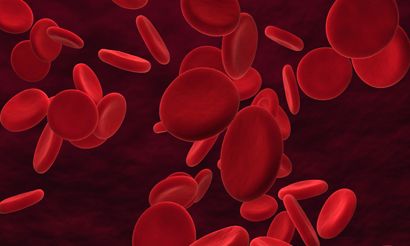Pirtobrutinib Elicits Preliminary Efficacy in RT-Pretreated B-Cell Malignancies
The phase 1/2 BRUIN study of pirtobrutinib led to promising early efficacy in patients with B-cell malignancies who were heavily pretreated with richter transformation.

In a cohort of patients heavily pretreated with richter transformation (RT) in the phase 1/2 BRUIN study (NCT03740529), treatment with pirtobrutinib (Jaypirca) led to promising preliminary efficacy, was well-tolerated, and showed low-rates of discontinuation due to drug-related toxicity.1
New data from the multi-arm trial showed that patients who were predominantly pre-treated RT had an overall response rate (ORR) of 52% (95% CI, 40.2-63.7), including 10 complete responses (CR) and 29 partial responses.
These findings were presented at the 2022 ASH Annual Meeting and included patients who received prior RT-directed chemoimmunotherapy and a covalent Bruton's tyrosine kinase inhibitor (BTKi).
Pirtobrutinib is a highly selective, non-covalent BTKi which inhibits wild-type and C481-mutant BTK with equal low nM potency. The BTKi has favorable oral pharmacology that enables continuous BTK inhibition throughout the dosing interval regardless of the intrinsic rate of BTK turnover. Previously, studies of pirtobrutinib have shown the agent to be well-tolerated and have promising efficacy in patients with poor-prognosis B-cell malignancies following previous therapy.
The FDA granted approval to pirtobrutinib in January 2023 for the treatment of adult patients with relapsed/refractory mantle cell lymphoma (MCL) who previously received at least 2 lines of systemic therapy, including a BTKi. Findings of the phase 1/2 BRUIN trial supported the approval as covalent BTK inhibitor pre-treated patients with relapsed/refractory MCL reached an overall response rate of 50% when treated with pirtobrutinib, and 13% of patients achieved a CR at time of analysis.
The phase 1/2 BRUIN trial enrolled patients with previously treated B-cell malignancies, including those with chronic lymphocytic leukemia (CLL), small lymphocytic lymphoma (SLL), non-Hodgkin lymphoma (NHL), and histologically confirmed RT.2 All patients with diffuse large B-cell lymphoma (DLBCL) were eligible for pirtobrutinib monotherapy in either the dose-escalation or dose-expansion parts of the study.The study also included 80 patients with Waldenström macroglobulinemia (WM).
In the phase 1 portion of the study, a dose-escalation portion was used with doses ranging from 25 mg to 300 mg once daily. The recommended phase 2 dose (RP2D) was identified as 200 mg once daily. The primary end points of the trial are investigator-assessed ORR, duration of response (DoR) per Lugano 2014 criteria, and safety. Secondary end points include DoR, ORR, best overall response, progression-free survival, overall survival, safety, tolerability, and pharmacokinetics.
A total of 75 patients were response evaluable with RT, including 68 who had received prior RT therapy and 7 with no prior RT therapy. For the RT cohort, patients were required to be 18 years and older with an ECOG performance status of 0-2, be previously treated, and have histologically confirmed RT. There was no limit on the number of prior lines of therapy one could have, and treatment with a prior covalent BTKi was permitted.
Among all patients enrolled in the RT cohort, the median age was 67 years (range, 26-95), most patients were male (67%), and most had stage IV disease (51%). Forty-six percent of patients had an ECOG performance status of 1, 39% had a score of 0, and 15% had a score of 2. Additionally, 81% of patients had elevated LDH, the median time from initial CLL diagnosis to RT presentation was 60.8 months (interquartile range [IQR], 17.4-101.5), and the median time from transformation to first dose of pirtobrutinib was 4.6 months (IQR, 1.8-13.1).
The median time to response was 1.8 months (range, 0.9-9.2) among the 75 response evaluable patients. The median time on the study was 6.7 months (range, 0.7-29.1), and the median time on treatment was 3.4 months (range, 0.2-26.7).
Findings showed that the median DoR was 5.6 months, regardless of prior RT therapy (95% CI, 1.9-NE). A total of 63% of responses were censored at the time of the data cutoff date of January 31, 2022, and the median OS in this group was 13.1 months (95% CI, 7.1-NE). A total of 6 patients discontinued pirtobrutinib in ongoing response and pursued curative-intent therapy with allogeneic transplant with a median time-on-therapy of 3.8 months (range, 2.5-11.5).
In the safety cohort which included all pirtobrutinib treated patients with B-cell malignancies (n = 725), the most frequent TEAEs were fatigue (28.7%), diarrhea (24.2%), and contusion (19.4%). The most frequent grade 3 or higher TEAE was neutropenia (20.4%). Moreover, low rates of grade 3 or greater TEAEs included hypertension (2.3%), hemorrhage (1.8%), and atrial fibrillation/flutter (1.2%), and 15 (2%) patients discontinued treatment due to a treatment-related AE.
This trial, which was 1 of the largest prospective RT populations ever evaluated, found pirtobrutinib to demonstrate promising efficacy in this patient population. The agent continues to be well-tolerated, reinforcing its role for patients with B-cell malignancies, including patients heavily pretreated with RT who have an extremely poor expected OS.










